

Discover more from The Jewish Table
Baked Apples (But Make it A Crisp)
And: Seeking humanity over hot takes on Israel and Palestine
Hey there! If you’ve found your way here but are not yet subscribed for the weekly newsletter, you can do that here. You will never miss a recipe or a story, and I’ll be eternally grateful for your support.
Hello The Jewish Table readers,
This week’s newsletter is going out to my whole subscriber list for the second week in a row. That’s partly because last week’s letter, which was written during the flurry of the first few stops of my Portico tour, did not include a recipe. And it’s also because I wanted to offer up a collective space for grief, shock, anger, and the myriad other emotions we might be feeling following the horrific news of Hamas’ attack on Israel.
I’ve shared some of my own thoughts below—as well as a few resources that I hope will provide context and comfort. And I’ve also opened up the comments on this letter to both free and paid subscribers. If it feels like the right space to share what’s in your heart, I welcome your feelings, thoughts, and conversation. Disagreeing viewpoints are welcome, but anything that borders on hate speech or fails to center humanity of innocent civilians will be deleted.
Baked Apples (But Make It A Crisp)
But first, a bit of edible comfort. I have always loved baked apples—but not as a dessert. The combination of tender fruit and wrinkly-sweet apple skin with autumn baking’s coziest flavor trio (butter + brown sugar + cinnamon) is delicious, full stop. I also love that baked apples have found their way into the hearts of so many Ashkenazi-American Jews as a more elegant stand-in for fruit compote. But compared to, say, a slice of chocolate cake, a fudgy brownie, or a couple of jam-filled rugelach, I am just never going to choose baked apples at the dessert table.
Breakfast is another story. There, alongside a pile of pancakes or a steaming bowl of oatmeal, baked apples just make sense. And paired with a swoop of tangy yogurt and with a mug of coffee nearby, a warm baked apple is truly sublime. So whenever I make baked apples (which is about once a year at precisely this moment), I skip the pretense of dessert all together and pack them up in a Pyrex container for the following morning.
My family recently went apple picking, as is our yearly tradition (I have the best photo somewhere of Max as a 14-month old cozy in the baby carrier and absolutely *devouring* a just-picked apple). It rained a bit at the beginning, but quickly turned into an ideal brisk and sunny fall day. And the farm we visited had their U-Pick schtick down, a gorgeous sunflower maze, and truly memorable apple cider donuts.

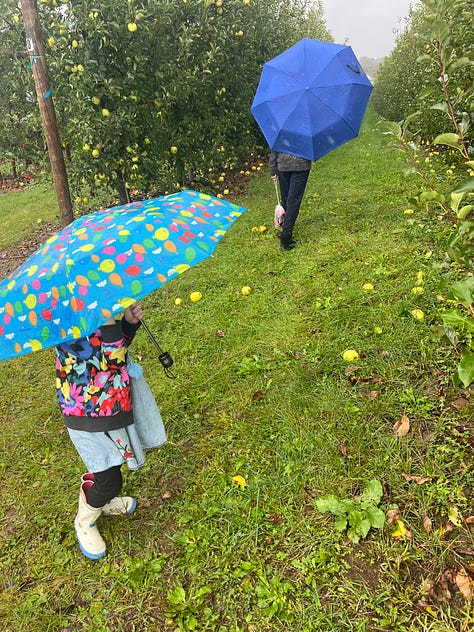



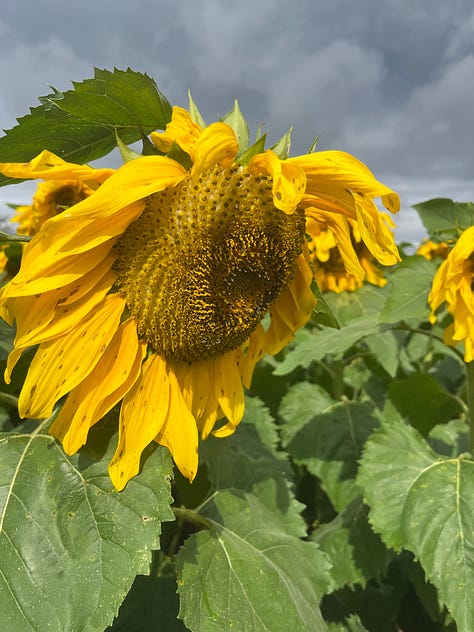



Even after making an extra big batch of my mom’s applesauce and eating our weight in sliced apples with peanut butter over the course of several days, we were still making our way through the day’s apple haul.
Yoshie suggested making an apple crisp, and I started thinking about baked apples when—whoosh—it occurred to me, “Why not both?” What if, instead of laboriously coring out the centers of whole apples (as one typically would for baked apples) or peeling and chopping them small (as one typically would for a crisp), I simply cut the apples in half scooped out the seeds? And what if, instead of the usual baked apple filling of walnuts and raisins, I generously mounded each apple half with a buttery, brown-sugar and rolled oat topping and then snuggled them into a baking dish?
The result was pretty extraordinary. The apples were spoon-tender and slumpy, while still holding their shape—just like a great baked apple. And the buttery, oat-y, cinnamon, cardamom, and lemon zest-perfumed cap was the perfect mix of decadent and nourishing—just like a great apple crisp.
I still don’t want to eat them for dessert. But breakfasts lately have been a real treat. If you have your own haul of apples to work through, or simply need a comforting breakfast, I hope this brings you some joy.
Baked Apples (But Make It A Crisp)
In theory you could make this dish parve by substituting a good quality plant-based butter, but they really taste best with the “real thing.” They are even more delicious served with yogurt, mascarpone, or barely sweetened whipped cream.
Serves 4 to 6
4-5 medium baking apples, unpeeled
1/2 cup (1 stick) unsalted butter or vegan butter, softened
3/4 packed cup (150 g) light brown sugar
1/4 cup (35 g) all-purpose flour (gluten free all-purpose is okay)
1 cup rolled oats (not instant)
1 teaspoon ground cinnamon
3/4 teaspoon ground cardamom
1 teaspoon grated lemon zest
1/4 teaspoon kosher salt
1/4 cup apple juice/cider or water
Preheat the oven to 375˚F.
Halve the apples lengthwise (through the stem and core). Using a melon baller or small, sturdy spoon, scoop out and discard the cores and seeds. Arrange the halved apples, cored-side up, in a 9x9 inch square baking dish.
In a bowl, combine the softened butter with the brown sugar, flour, oats, cinnamon, cardamom, lemon zest, and salt. Using your fingers, a potato masher, or a fork, press and combine the ingredients until it forms a crumbly mixture.
Divide the topping amongst the apples, mounding and pressing it generously over the surface of each apple. Carefully pour the juice (or water) into the baking dish, taking care not to pour it directly over the apples.
Bake until the fruit is tender and juicy, and the crisp topping is golden, 40-50 minutes. (The total time will depend on what variety of apple you use and how soft you like the apples to be.)
Serve warm or at room temperature, drizzled with some of the juices from the baking dish.
Seeking Humanity Over Hot Takes
The moment I saw the BREAKING NEWS announcement flash on my phone about an attack by Hamas on Israel, I felt my jaw clench and my spine lock up as I braced myself.
While I couldn’t predict the unprecedented extent of the assault or the utterly horrific details that would emerge, I knew in my gut what was coming. Bloodshed. Terror. Innocent people murdered. The frantic Whatsapp messages to loved ones to make sure they were safe. And also the immediate rush by those of us watching from afar to take up our defensive, reactionary positions.
Within minutes after the attacks were first reported, the hot takes started appearing on social media. On the one side: “These attacks came out of nowhere.” On the other: “Israel has committed years of atrocities against the Palestinian people—what did you expect?” On the one side: “Stand with Israel, no matter what.” On the other: “Free Palestine.”
I understand how in moments of intense pain, it can be comforting to take a firm and unyielding stance—to cling to something tightly when we otherwise feel hopeless and helpless. I understand how coming face-to-face with unmitigated cruelty scrambles our hearts and blurs our perspective. When we see something so inhumane happening, it deadens our own sense of humanity.
These are dark times. The death toll in Israel—including babies, children, and elders—continues to climb, and Israeli civilians are still being held hostage in Gaza. Meanwhile, in New York City yesterday, activists chanted “From river to sea, Palestine will be free”—a phrase that calls for the complete annihilation of Israel. And outside of the Sydney Opera House, more than 1,000 extremists chanted “Gas the Jews,” making quite clear that their goal is not liberation for Palestinians, but death to Jewish people.
Netanyahu’s extremist government has responded to the Hamas attack by ordering a complete siege of Gaza, flattening civilian villages and sacred mosques in airstrikes and halting supplies of electricity, food, and water—all of which will harm everyday Palestinians—including babies, children, and elders—far more than it will ever deter Hamas.
I am in no place to tell anyone how to feel or react to something so tragic and complex. But I urge us all not to lose our grasp of humanity, as terribly difficult as that feels. When we do, we play into the trap set for us by terrorists and dictators and we make future prospects for peace feel even further away.
Let us remember, in this moment that Jewish lives are sacred and Jewish trauma is real. It is historically rooted and especially raw right now. But let us not forget that everyday Palestinians do not deserve the pain and suffering they are experiencing at the hands of Hamas’s reign of terror. Nor do they deserve the pain and suffering from Netanyahu’s scorched earth response to the attacks.
With cycle upon cycle of violence, seeking the nuance of humanity is hard. But we are capable of holding multiple things in our hearts at once. We are capable of holding intense grief and anger, while standing rock solid in our compassion. We are capable of holding pride in who we are, while seeing the humanity of others. Holding nuance is not being naive, it is planting a stake in the ground for hope over helplessness.
This is an ongoing and unfurling tragedy, so I do not have a tidy way to end my thoughts here. Instead, here are a few resources that I found helpful. And I hope you will help continue the conversation (respectfully)—with me and with one another—in the comments below.
A solid, nuanced and thoughtful explanation of the current horrors in Israel, their historical context, and their political implications going forward.
Same as above, but with an extra day’s worth of information and time for reflection.
An all-too rare social media post that demonstrates nuance and honestly grapples with the complexities of firmly believing in Israel’s right to a peaceful existence while also supporting human rights for Palestinians.
A personal reflection by my former boss at Hazon (now Adamah), Nigel Savage, that I think effectively demonstrates a way of holding grief and anger alongside compassion.
Prayer of Mothers for Life and Peace
This modern day prayer was co-written by Jewish and Muslim mothers in response to the ongoing conflict between Israel and Palestine.
Subscribe to The Jewish Table
recipes + stories from the world of jewish food, by leah koenig





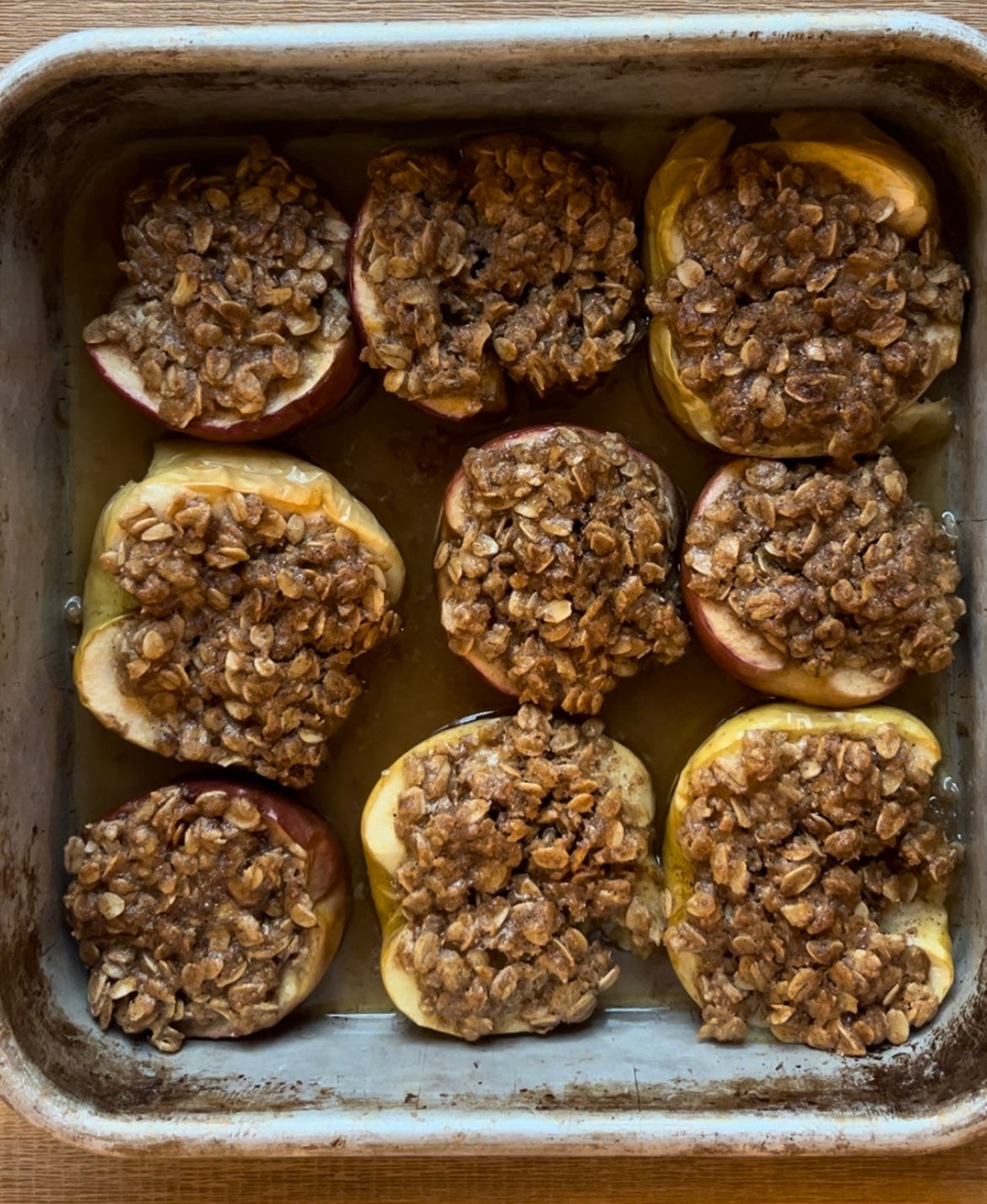


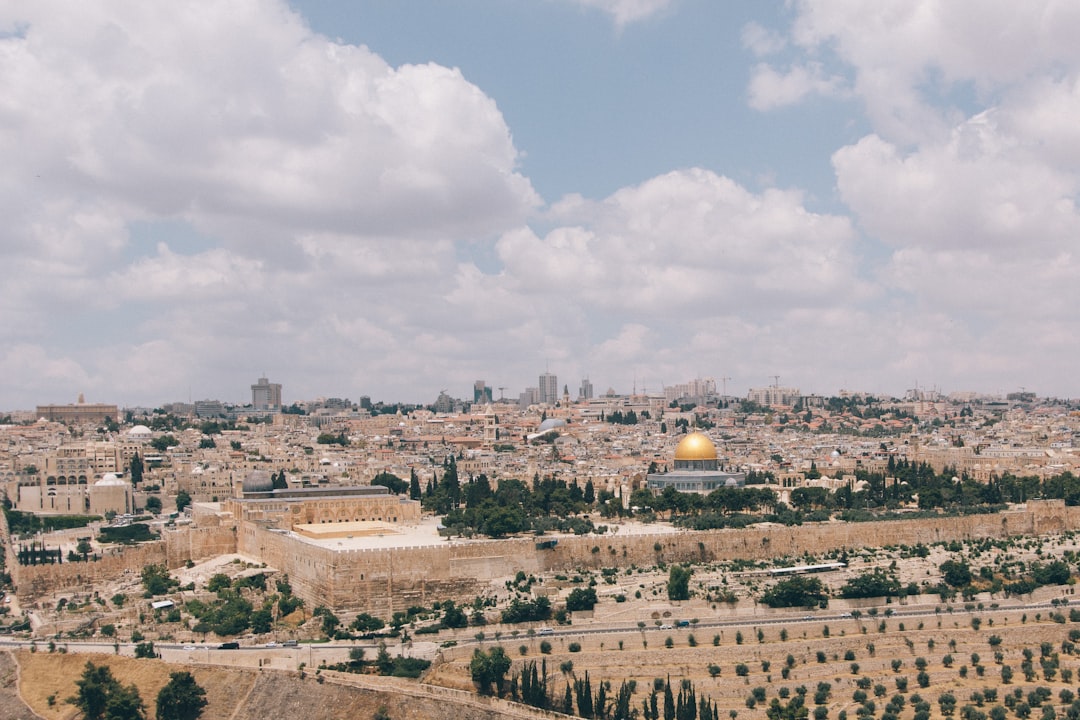
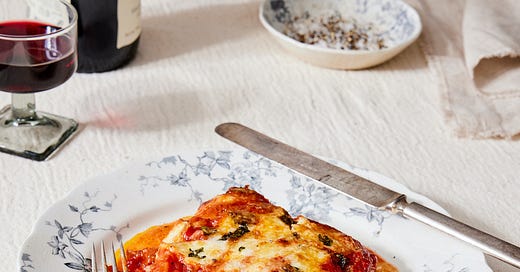

Thank you, Leah, for this post and your grace.
Just listened to pod save the world. Thank you for the suggestion.